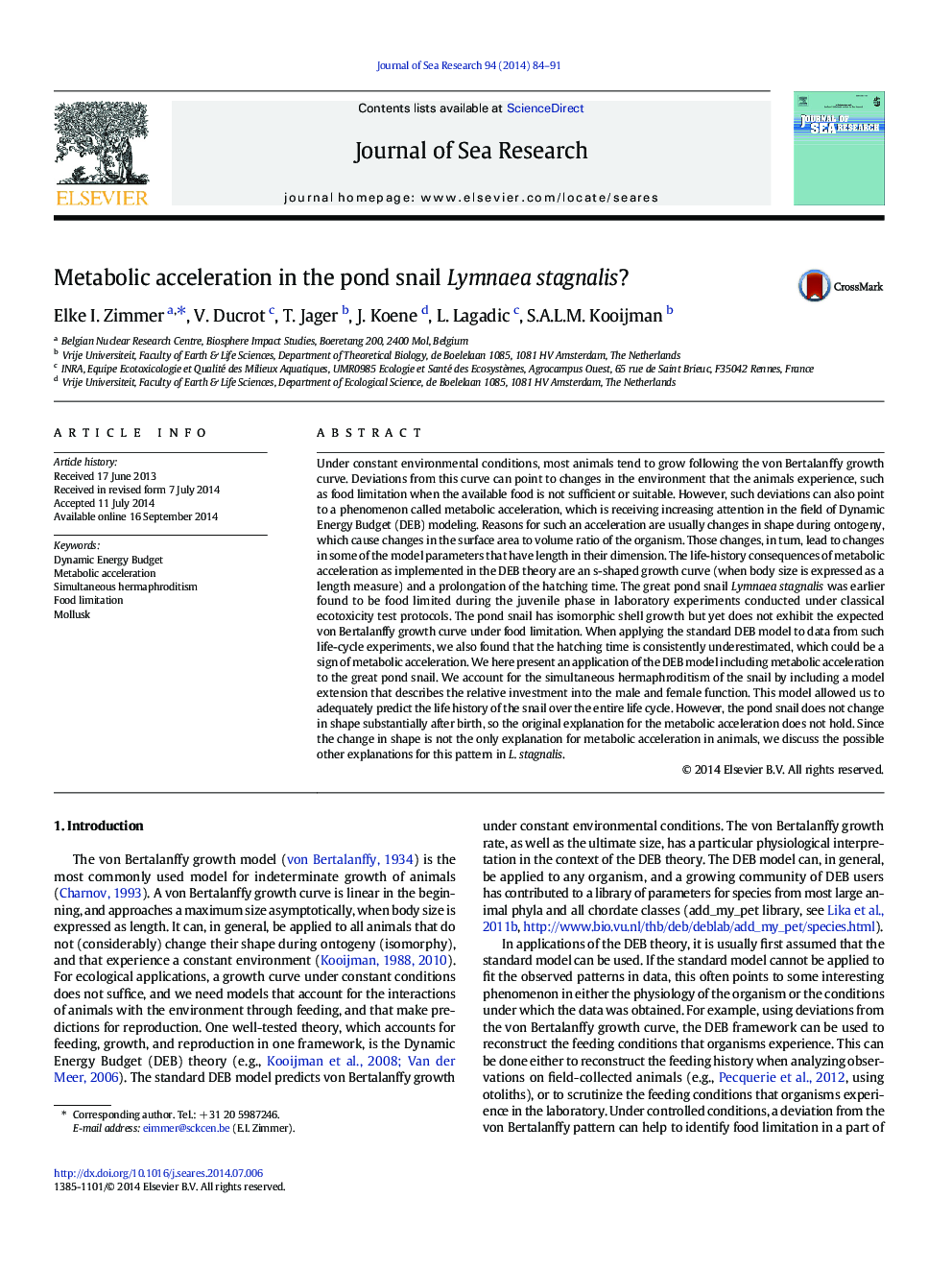| کد مقاله | کد نشریه | سال انتشار | مقاله انگلیسی | نسخه تمام متن |
|---|---|---|---|---|
| 4549729 | 1627480 | 2014 | 8 صفحه PDF | دانلود رایگان |

• The snail L. stagnalis is modeled with a DEB model including metabolic acceleration.
• The full life cycle of the snail is captured for the first time.
• We discuss the potential interaction with the previously found food limitation.
• We suggest experiments to disprove our findings.
Under constant environmental conditions, most animals tend to grow following the von Bertalanffy growth curve. Deviations from this curve can point to changes in the environment that the animals experience, such as food limitation when the available food is not sufficient or suitable. However, such deviations can also point to a phenomenon called metabolic acceleration, which is receiving increasing attention in the field of Dynamic Energy Budget (DEB) modeling. Reasons for such an acceleration are usually changes in shape during ontogeny, which cause changes in the surface area to volume ratio of the organism. Those changes, in turn, lead to changes in some of the model parameters that have length in their dimension. The life-history consequences of metabolic acceleration as implemented in the DEB theory are an s-shaped growth curve (when body size is expressed as a length measure) and a prolongation of the hatching time. The great pond snail Lymnaea stagnalis was earlier found to be food limited during the juvenile phase in laboratory experiments conducted under classical ecotoxicity test protocols. The pond snail has isomorphic shell growth but yet does not exhibit the expected von Bertalanffy growth curve under food limitation. When applying the standard DEB model to data from such life-cycle experiments, we also found that the hatching time is consistently underestimated, which could be a sign of metabolic acceleration. We here present an application of the DEB model including metabolic acceleration to the great pond snail. We account for the simultaneous hermaphroditism of the snail by including a model extension that describes the relative investment into the male and female function. This model allowed us to adequately predict the life history of the snail over the entire life cycle. However, the pond snail does not change in shape substantially after birth, so the original explanation for the metabolic acceleration does not hold. Since the change in shape is not the only explanation for metabolic acceleration in animals, we discuss the possible other explanations for this pattern in L. stagnalis.
Journal: Journal of Sea Research - Volume 94, November 2014, Pages 84–91